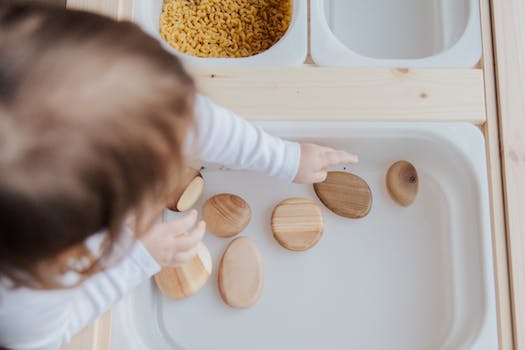How To Save Money With Receipts
Introduction

Introduction: Saving money is a crucial aspect of financial planning. One way to save money is by keeping track of your expenses through receipts. Receipts are a record of your purchases and can help you identify areas where you can cut back on spending. In this article, we will discuss how to save money with receipts.
5 Simple Ways to Track Your Expenses with Receipts
As we go about our daily lives, we often make purchases without giving much thought to the impact they have on our finances. However, keeping track of our expenses is crucial if we want to save money and achieve our financial goals. One simple and effective way to do this is by using receipts.
Receipts are a record of our purchases, and they can be used to track our expenses and identify areas where we can cut back. Here are five simple ways to use receipts to save money:
1. Keep all your receipts
The first step to using receipts to track your expenses is to keep all of them. This means collecting receipts from every purchase you make, no matter how small. You can keep them in a designated folder or envelope, or use a digital app to store them on your phone.
By keeping all your receipts, you can get a clear picture of your spending habits and identify areas where you may be overspending. For example, if you notice that you’re spending a lot of money on takeout food, you can make a conscious effort to cook more meals at home and save money.
2. Categorize your receipts
Once you have all your receipts, it’s important to categorize them. This means grouping them into different categories such as groceries, entertainment, transportation, and so on. You can use a spreadsheet or a budgeting app to do this.
Categorizing your receipts allows you to see where your money is going and identify areas where you can cut back. For example, if you notice that you’re spending a lot of money on entertainment, you can look for cheaper alternatives such as free events or discounted tickets.
3. Set a budget
Using receipts to track your expenses is only effective if you have a budget in place. A budget is a plan for how you will spend your money, and it helps you stay on track and avoid overspending.
Once you have categorized your receipts, you can use them to set a budget for each category. For example, you can set a budget of $200 for groceries and $100 for entertainment. This will help you stay within your means and avoid overspending.
4. Look for discounts and coupons
Another way to save money with receipts is by looking for discounts and coupons. Many retailers offer discounts and coupons that can be used on future purchases. By keeping your receipts, you can take advantage of these offers and save money.
For example, if you buy a product that comes with a coupon for your next purchase, you can use that coupon to save money on your next purchase. This can add up over time and help you save a significant amount of money.
5. Use receipts to track your progress
Finally, you can use receipts to track your progress and see how far you’ve come. By comparing your receipts from different months or years, you can see how your spending habits have changed and identify areas where you’ve made progress.
For example, if you notice that you’re spending less money on takeout food than you were a year ago, you can pat yourself on the back for making progress. This can be a great motivator to keep going and continue making positive changes to your spending habits.
In conclusion, using receipts to track your expenses is a simple and effective way to save money. By keeping all your receipts, categorizing them, setting a budget, looking for discounts and coupons, and using them to track your progress, you can take control of your finances and achieve your financial goals. So the next time you make a purchase, don’t forget to keep the receipt!
Maximizing Your Savings: How to Use Receipts for Price Matching
As consumers, we are always looking for ways to save money. One often overlooked method is by using receipts for price matching. Price matching is when a retailer matches the price of a product from a competitor. This can be a great way to save money, but it requires some effort on your part. In this article, we will discuss how to use receipts for price matching and maximize your savings.
The first step in using receipts for price matching is to keep your receipts. This may seem obvious, but many people throw away their receipts without thinking. Keeping your receipts is essential because it provides proof of purchase and the price you paid for the product. Without a receipt, you cannot price match.
Once you have your receipts, you need to do some research. Look for retailers that offer price matching and their policies. Some retailers may only match prices from specific competitors, while others may have restrictions on the products they will match. It is important to know the policies of the retailers you plan to visit to ensure you are eligible for price matching.
After you have done your research, it is time to start shopping. When you find a product you want to purchase, check the price at other retailers. If you find a lower price, take a picture of the product and the price tag. This will serve as proof of the lower price.
When you are ready to make your purchase, bring your receipt and the proof of the lower price to the retailer. Show the cashier your receipt and the proof of the lower price. The cashier will verify the price and adjust the price of the product accordingly.
It is important to note that not all retailers offer price matching, and some may have restrictions on the products they will match. Additionally, some retailers may only match prices from specific competitors. It is important to do your research and know the policies of the retailers you plan to visit.
Using receipts for price matching can be a great way to save money, but it requires some effort on your part. You need to keep your receipts, do your research, and be prepared to show proof of the lower price. However, the effort is worth it when you can save money on the products you want to purchase.
In addition to using receipts for price matching, there are other ways to save money with receipts. Many retailers offer rewards programs that allow you to earn points or cash back for your purchases. These rewards can add up over time and provide significant savings.
Another way to save money with receipts is to use coupons. Many retailers offer coupons that can be used on future purchases. These coupons can be found in-store, online, or through rewards programs.
In conclusion, using receipts for price matching can be a great way to save money. It requires some effort on your part, but the savings can be significant. Remember to keep your receipts, do your research, and be prepared to show proof of the lower price. Additionally, there are other ways to save money with receipts, such as rewards programs and coupons. By using these methods, you can maximize your savings and keep more money in your pocket.
The Ultimate Guide to Organizing Your Receipts for Tax Deductions
As tax season approaches, many people are scrambling to gather all of their receipts in order to claim deductions on their taxes. However, organizing receipts can be a daunting task, especially if you have a lot of them. But fear not, there are ways to make the process easier and even save you money in the long run.
First and foremost, it’s important to keep all of your receipts. Even if you’re not sure if it’s tax deductible, it’s better to have it and not need it than to need it and not have it. This includes receipts for everything from business expenses to charitable donations to medical expenses.
Once you have all of your receipts, it’s time to organize them. One way to do this is to create a spreadsheet or use a receipt tracking app. This will allow you to easily categorize your receipts and keep track of which ones are tax deductible. You can also use a physical filing system, such as a binder or accordion folder, to keep your receipts organized.
When categorizing your receipts, it’s important to know what is and isn’t tax deductible. For example, business expenses such as travel, meals, and office supplies are typically tax deductible. Charitable donations, medical expenses, and education expenses may also be tax deductible. However, personal expenses such as clothing and groceries are not tax deductible.
Another way to save money with receipts is to take advantage of cash back apps and credit card rewards programs. Many of these programs offer cash back or points for purchases made at certain stores or for certain types of purchases. By keeping track of your receipts and using these programs, you can earn money back on purchases you were already planning to make.
It’s also important to keep track of your receipts throughout the year, not just during tax season. This will allow you to stay on top of your spending and make adjustments as needed. By keeping track of your receipts, you can also identify areas where you may be overspending and make changes to your budget.
In addition to saving money on taxes and earning cash back, keeping track of your receipts can also help you with budgeting and financial planning. By knowing exactly how much you’re spending and where your money is going, you can make informed decisions about your finances and set goals for the future.
In conclusion, organizing your receipts may seem like a tedious task, but it can ultimately save you money and help you with financial planning. By keeping track of your receipts, categorizing them, and taking advantage of cash back programs, you can earn money back on purchases you were already planning to make. So, don’t throw away those receipts – they could be worth more than you think.
How to Earn Cash Back and Rewards with Receipts
As someone who is always looking for ways to save money, I have found that keeping track of my receipts can be a great way to earn cash back and rewards. It may seem like a small thing, but those little pieces of paper can add up to big savings over time.
One of the easiest ways to earn rewards with receipts is through cash back apps. There are a variety of apps available that allow you to earn cash back on your purchases simply by scanning your receipts. Some popular options include Ibotta, Checkout 51, and Receipt Hog.
I have personally used Ibotta and have found it to be a great way to earn cash back on my grocery purchases. The app offers cash back on a variety of products, from food to household items, and even offers bonuses for completing certain tasks or purchasing specific products.
Another way to earn rewards with receipts is through loyalty programs. Many stores offer loyalty programs that allow you to earn points or rewards for your purchases. These rewards can often be redeemed for discounts or free products.
For example, my local grocery store offers a loyalty program that allows me to earn points for my purchases. These points can then be redeemed for discounts on future purchases or even free items. It may not seem like much, but over time those discounts and free items can really add up.
In addition to earning rewards, keeping track of your receipts can also help you save money by allowing you to track your spending. By reviewing your receipts, you can see where your money is going and identify areas where you may be overspending.
For example, if you notice that you are spending a lot of money on eating out, you may decide to cut back on those expenses and cook more meals at home. By making small changes like this, you can save money and improve your overall financial health.
Of course, in order to make the most of your receipts, you need to make sure you are keeping them organized. One way to do this is to use a receipt scanner or app to digitize your receipts. This can make it easier to keep track of your receipts and ensure that you don’t lose any important information.
Another option is to simply keep a physical file of your receipts. This can be as simple as a folder or envelope where you store your receipts. Just make sure to keep them organized by date or category so that you can easily find what you need when you need it.
In conclusion, keeping track of your receipts can be a great way to save money and earn rewards. Whether you use cash back apps, loyalty programs, or simply review your receipts to track your spending, there are many benefits to keeping those little pieces of paper. So the next time you make a purchase, don’t forget to hold onto that receipt – it could be worth more than you think.
Saving Money on Groceries: Tips and Tricks with Receipts
As someone who is always looking for ways to save money, I have found that keeping track of my receipts has been a game-changer. Not only does it help me stay within my budget, but it also allows me to see where I can cut back on unnecessary expenses. Here are some tips and tricks on how to save money with receipts.
First and foremost, it is important to keep all of your receipts in one place. Whether it be a folder, envelope, or even a shoebox, having a designated spot for your receipts will make it easier to keep track of them. This will also come in handy when it comes time to do your taxes or if you need to return an item.
Once you have all of your receipts in one place, it is time to start analyzing them. One of the easiest ways to save money with receipts is to look for items that you can return. If you bought something that you no longer need or want, check the store’s return policy to see if you can get your money back. This is especially helpful for big-ticket items that you may have purchased on a whim.
Another way to save money with receipts is to look for items that you can price match. Many stores offer price matching, which means that if you find the same item for a lower price at a different store, they will match that price. This can save you a significant amount of money, especially on big-ticket items like electronics or appliances.
In addition to price matching, many stores also offer loyalty programs or rewards programs. These programs allow you to earn points or cash back on your purchases, which can then be redeemed for discounts or free items. Be sure to sign up for these programs and keep track of your rewards so that you can take advantage of them when you need them.
One of the biggest ways to save money with receipts is to look for sales and discounts. Many stores offer weekly or monthly sales, and keeping track of these sales can help you save money on items that you need. Additionally, many stores offer coupons or discount codes that can be used in-store or online. Be sure to keep track of these coupons and use them when you can to save money on your purchases.
Finally, it is important to keep track of your receipts so that you can monitor your spending. By analyzing your receipts, you can see where you are spending the most money and where you can cut back. This can be especially helpful when it comes to grocery shopping, as you can see which items are costing you the most money and look for cheaper alternatives.
In conclusion, keeping track of your receipts can be a great way to save money. By looking for items that you can return, price match, or use coupons on, you can save a significant amount of money on your purchases. Additionally, keeping track of your receipts can help you monitor your spending and find areas where you can cut back. So the next time you make a purchase, be sure to hold onto your receipt and see how it can help you save money in the long run.
Conclusion
Conclusion: Saving money with receipts is a simple and effective way to keep track of your expenses and identify areas where you can cut back. By organizing your receipts, using cashback apps, and taking advantage of price matching policies, you can save money on everyday purchases and make your budget go further. With a little effort and attention to detail, anyone can start using receipts to save money and achieve their financial goals.







